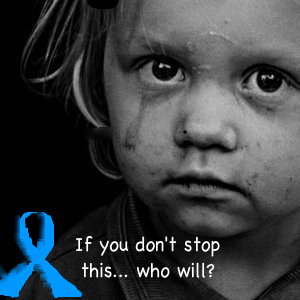Vivian decided to participate in a Children’s Right Colloquium held by her law school this month. Here, she shares what she learnt.
As promised in Part 1, Part 2 will be about the ambiguity of the Child Act 2001, and how Malaysia is not fully adopting the UN Convention on the Rights of the Child (CRC) because the CRC is incompatible with Syariah Laws.
“Children are the world’s most valuable resource and its best hope for the future”- John Fitzgerald Kennedy (35th President of the United States).
In Part 1, we saw that the Child Act 2001 (“Act”) only addresses problems of juvenile delinquency, child prostitutions, out-of-control children, punishments for child trafficking, abuse, and proceedings for the children’s court. The Act fails to address the vitality of education in the country.
In 2004, the Bar Council called for an urgent review of criminal procedure element of the Act.

Ambiguity in the Act
The Act’s unclarity was brought to light in a 2007 case involving a 13-year old convicted of murder. Under Section 97(1) of the Act, capital punishment may not be applied to children. Sections 97(2), 97(3), and 97(4) make provisions for alternative punishments for offences which would result in the death penalty if committed by adults, namely detention at the pleasure of the Yang di-Pertuan Agong.
However, Section 97(2) was overturned by the Court of Appeal in July 2007 on the grounds that it violated the Constitution of Malaysia’s doctrine of separation of powers, leading to the situation that no punishment at all could be rendered.
The Act was meant to give further protection to a child offender. There are however a number of shortcomings missing from the Act. Besides the uncertainty of detention period under Section 97, another omission is the maximum length of the remand order. For an adult offender, Section 117 of the Criminal Procedure Code provides for a maximum of 14 days remand. Section 84(2) of the Child Act simply allows the court to make a remand order without prescribing the maximum length of remand. This problem was subsequently remedied in a 2003 case which held that the Criminal Procedure Code would govern the remand period of a child.
With regards to the trial procedure, an adult accused has the option to give sworn evidence, unsworn evidence, or remain silent. The Act does not provide for any right to remain silent. Section 90(9) merely allows the child to give sworn or unsworn evidence.
Thus, it is evident that the Act has room for improvement, as it fails to cover the many contingencies that it is purposed to do. In addition to that, there are occasions where the Act contradicts the Criminal Procedure Code, and clearly needs amendment to maintain consistency in the laws. Moreover, when the Act contradicts the Criminal Procedure Code (CPC), the CPC is to be read as governing the current Act. In a sense, the Act is obsolete in matters conflicting to the CPC, as the CPC is allowed to supersede the 2001 Act.
Also, even as the CRC has been ratified by the Act, the CRC is not fully adopted by Malaysia as the CRC is said to be conflicting to the Syariah Laws. Hence, ‘reservations’ (which allow a state to disagree with a provision in a treaty) are made as to the said treaty to accommodate for such discrepancies.
Malaysia made seven reservations which include reservations to Art 14(1). For instance, this Article provides that a child shall have the right to freedom of thought, conscience and religion. However, the reservation allows for a declaration that the paragraph shall be interpreted in compliance with the basic foundations of the Malaysian legal system.
Also, in Syariah law, a child is any person that has not reached its puberty (baligh) and it is based in effect on the Islamic principle of ‘akl’ (reason) which may not necessarily be 18 years old. This is drastically different from the CRC which defines children as human beings under the age of 18.
Adoption is also generally not accepted in Syariah law. The Islamic variant (kalafa) allows for a child to be brought up by another family other than the biological one, but the child does not have any inheritance rights. The right of property is however protected through gift inter-vivos (hibah).
However, many Muslim countries subscribe to a number of specifically Islamic declarations on the rights of children; and reference is made to the Charter on the Rights of the Arab Child, and the Cairo Declaration on Human Rights in Islam in aiming to regulate children’s rights.
The CRC has incorporated a complete set of international human rights law, including civil, social and humanitarian rights. However, these rights are found on different basis in Syariah law as well.
However, despite the differences stated above, at the end of the day, we go back to the main purpose and what is most important; that is the real results of these legal documents actually depend on how they are implemented, and what is done to follow up to reach the ideals. We would have to look at the real results of implementation in our country.
From the past few years, the trend of child abuse in Malaysia is increasing steeply, and this has been alarming. An average of 7 children were abused every day in 2008 according to Malaysia’s Social Welfare Department statistics, which revealed a rise in the numbers of children being abused. In 2008, 2,780 cases of child abuse were reported compared to 2,279 in 2007 and 1,999 in 2006. Keep in mind that these are only reported cases. UNICEF and its partners fear that it does not tell the true story about child abuse in the country. Moreover, often abuse cases are reported when it is already too late.
Hence because of this, as of 6 October 2010 the organisation highlights during their launch of its ‘Get on Board’ campaign, to put an end to child abuse as it is a shared responsibility. The two-month initiative drives home the message of child protection with a rallying call to action: ‘Raise your hand. Stop child abuse now!’ and aims to unite 100,000 Malaysians in time for the finale on Human Rights Day in December.
Like the ripple effect in waters, this small gesture in taking part may save a child from abuse, and may save a child’s life. Remember, the protection of children’s rights is our collective responsibility.
Vivian Kuan is a person that never lets anyone tell her she can’t do something. She channels her time and energy only to what she loves in life. Thus, she chose to read law and is currently in her second year. Other than burying her head in law books, she loves to dance, play the piano and write songs. And she never says no to food. She has a heart for people; hence she finds joy in making a difference in the lives of others. She always believes she can do anything, which sometimes gets her into crazy situations, but that belief gets her through. She’s always wanted to be a part of something bigger in life.

im sorry vivian..im not sure about how u view the Syariah's law..it is way too general and lack of context it may lead to some misunderstanding..adoption is ACCEPTED in Islam's law..but at some point in order to distinct the biological and the adopted children..the Syariahs provide some regulations..for example the one you say about inheritance rights and hibah..u'll notice options were given to the parents and the adopted ones can get the inheritance in the will of the parents which usually they do,..these kind of law is to make sure the justness to the biological and to the adopted ones..
Vivian:
Great article Part 2 =). Hope you don't mind if I give some differing opinions though (I might be wrong in my opinions, but you might want to double check accordingly):
1) Quoting from you "Moreover, when the Act contradicts the Criminal Procedure Code (CPC), the CPC is to be read as governing the current Act. In a sense, the Act is obsolete in matters conflicting to the CPC, as the CPC is allowed to supersede the 2001 Act."
S. 3 of the CPC specifically states that it is subject to any written law in force. It means that if there is any written law on the same subject, the other written laws will prevail.
2)Quoting from you again "The Act does not provide for any right to remain silent. Section 90(9) merely allows the child to give sworn or unsworn evidence."
S. 5 of the CPC allows English Law to be referred to if there is a lacuna in the law. In English Law, children cannot give sworn statement. Hence, s.90(9) of CA 2001 was meant as an express divergence from the English Law. The reason why there is no need for the right to remain silent to be in the CA 2001 is that, s.112(2) of the CPC and its proviso applies across the board for all criminal proceedings, including criminal procedure in court for children, subject to any other written law in force. This means that there is only a necessity to put in a clause for the right to remain silent if parliament wants to diverge from s.112(2) of the CPC.
3) "This problem was subsequently remedied in a 2003 case which held that the Criminal Procedure Code would govern the remand period of a child."
The case is PP v N (a child) 2003 2 MLJ 299 [ also known as Re N (a minor) 2003]. There was no uncertainty actually. The case explained it. The word "detention" was used in s. 83(1) of the CA 2001, which is the same as s.117 of the CPC. Hence, as aforementioned, only in circumstances where any other written law is provided, CPC will be the governing Act for criminal proceedings.
………………………………………………………
My point is, the law is not exactly obsolete in a sense that children rights are not protected. They may be obsolete to reflect the mental growth of children nowadays as mentioned in my previous comment on part 1 of your article, but children rights can be abundantly found in written law.
Hence, if at all there should be a change to advocate children rights, it should not be in the amendments of the law, as they are already on paper. It should be the implementation of those rights, perhaps either through government policy or NGO.